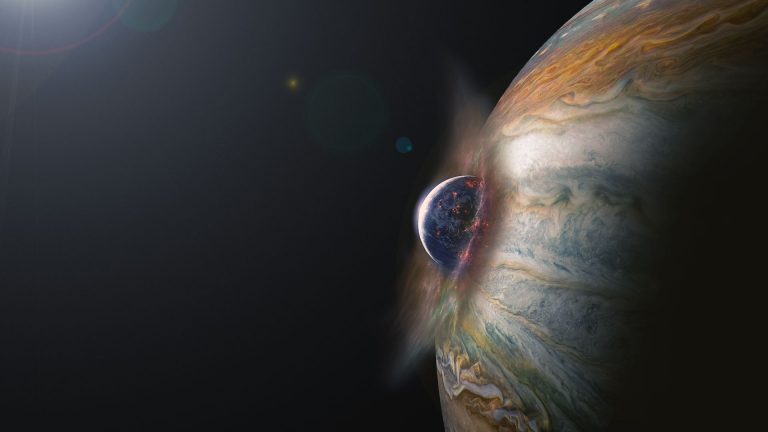Jupiter has swallowed 30 small Earths inside itself – NASA

Jupiter means the planet Jupiter is the largest planet in our solar system. Its size is so big, even if all the planets are included, it still proves to be 2.5 times bigger than them. We have been hearing about it that it is made up of helium and hydrogen gases. But like other gaseous planets, metal has also been used in its formation. Scientists have now found out whether the metals present in it were taken from other planets or it has swallowed entire subtle planets inside itself!
Using the Gravity Science instrument, through NASA’s space craft Juno, scientists have detected the elements involved in the formation of the planet Jupiter. Juno’s name is also associated with Jupiter. It is named Juno after the Roman female god who married the Roman god Jupiter. Juno was launched into Jupiter’s orbit in 2016. There it used radio waves to measure the planet’s gravitational field.
Scientists found that elements like metals are present in the womb of the planet Jupiter, whose measurement ranges from 11 to 30 times the size of the Earth. These metals are right near the center of the planet.
“It is possible for a gas giant like Jupiter to collect metal in one of two ways – either it has gathered small pieces of metal or it has swallowed the planets inside itself.” Yamila Miguel, lead author of the study, said. The study, titled Jupiter’s inhomogeneous envelope, is published in the journal Astronomy and Astrophysics.
“We know that when a newborn planet becomes capable of this, it starts throwing out small pieces of metal. It is believed that so much metal was already present and it can be said that at the time of the formation of Jupiter, only small pieces of metal must have been there. After that it ingested the larger pieces of the planets from which such a large amount of metal has been found. “
Large objects present in space, which are like small planets, are called Planetesimals. They are made of dust and particles present in space. Once they grow to a size of up to a kilometer, their own gravitational force is created, which pulls the other fragments and become as large as planets in size. Then they are called protoplanets or minor planets.
“Our results suggest that while Jupiter’s outer shell of helium and hydrogen was expanding, it must have ingested these microscopic planets, which is why it currently contains such high amounts of metal.” Miguel said.






